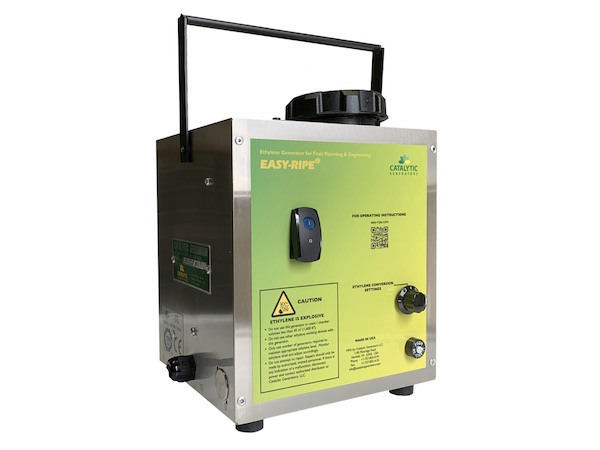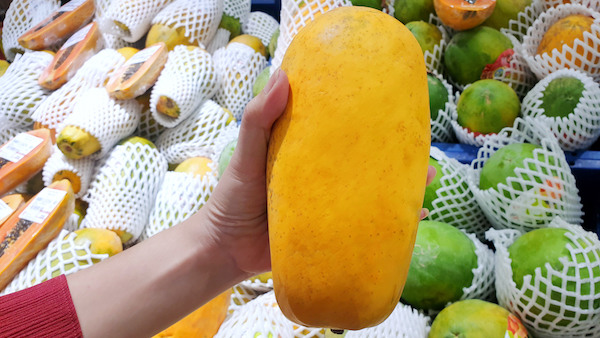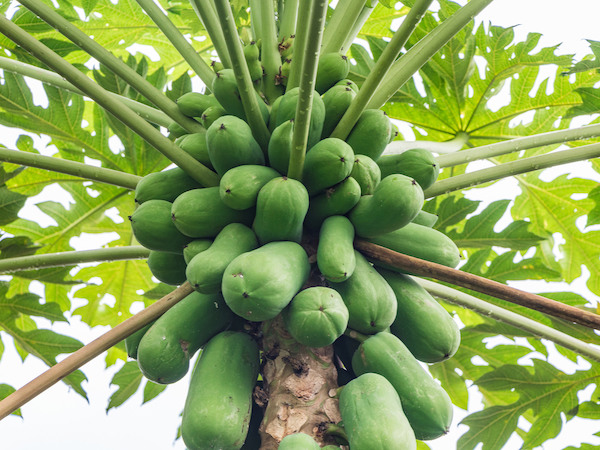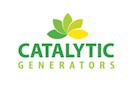Papayas can be found year-round at local grocers, thanks to strategic ethylene application. Ethylene generators from Catalytic Generators help to turn dark green papayas to a golden yellow color when ripened. To perfect the papaya ripening process by ethylene application, ripeners should follow the suggested protocols listed below.

Determine the fruit maturity when received.
The degree of maturity in papayas is related to external color development and will indicate whether the papaya should be exposed to ethylene. Papayas that are fully mature at harvest should not be ripened with ethylene if they are to be stored for an extended period. Papayas of ¼ to ½ yellow color minimum will benefit from a treatment of ethylene with an improvement in texture and color. Papayas that are immature (green) can ripen but will never develop good flavor. Other physical changes that are associated with papaya ripening include a decrease in flesh firmness, increased juiciness, and increased aroma volatiles.
Strategically place papayas within ripening rooms.
If not using pressurized ripening rooms, then air stack the boxes (at least 2″ between boxes) to ensure proper air circulation. Leave 1½ feet between walls and pallets and about 6″ between pallets.

Utilize temperature and humidity management.
Ripening occurs faster when papayas have been previously held at low temperatures. Depending upon desired shipping time, bring the pulp temperature to the range of 72 to 82°F (22 to 27.5°C) for the best color development. The temperature within the room during ethylene application should be between 20 to 25°C (68 to 77°F); if the temperature goes above 86°F (30°C), ripening will be stalled.

Apply ethylene and vent ripening rooms.
Apply 100 ppm ethylene for 24-48 hours (actual time of exposure to ethylene is determined by the maturity of the fruit; a yellowing of fruit color indicates that the papayas are producing ethylene and the generator is no longer needed) to induce faster and more uniform ripening, provided that carbon dioxide is kept below 1% by ventilating the rooms with outside air once per day. Rooms should be vented by opening doors or controlled fan exhaust ventilation for 20 minutes every 12 hours to flush out carbon dioxide and bring in oxygen.
To achieve 100 ppm, the generator setting will depend on the size of the ripening room:
- Setting 1 for rooms 1600 – 2500 cubic feet (45-70 m3 )
- Setting 2 for rooms 2500 – 5000 cubic feet (70-142 m3)
- Setting 3 for rooms 5000 – 7500 cubic feet (142-212 m3)
- Setting 4 for rooms 7500 – 10000+ cubic feet (212-283+ m3)
Following these best practices will result in better papaya color, texture, and overall quality. Papayas have been ripened successfully for some time by using Catalytic Generators and Ethy-Gen® II Ripening Concentrate to produce ethylene in the ripening room.
 For more information:
For more information:
Greg Akins
Catalytic Generators, LLC
Tel: +1 (757) 855-0191
Email: info@catalyticgenerators.com
www.catalyticgenerators.com
